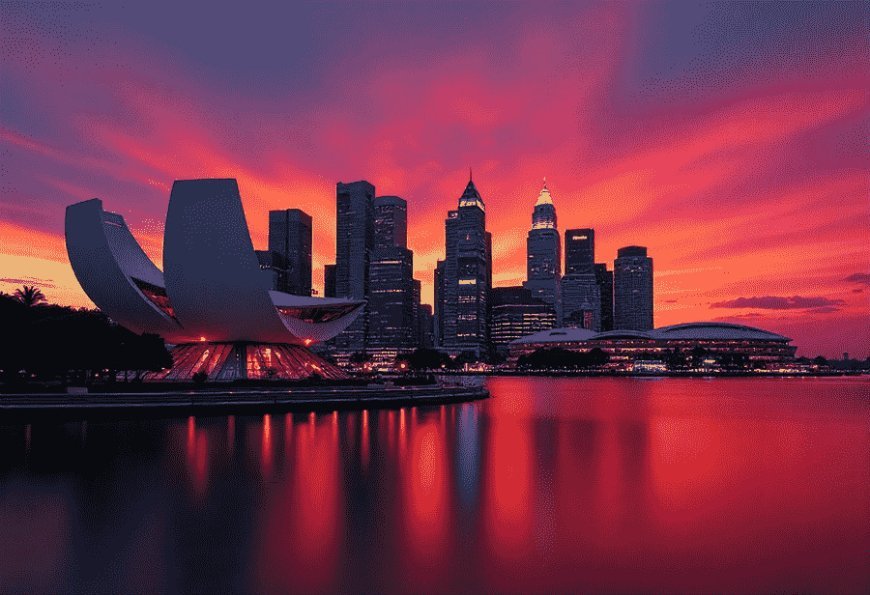US, Thailand, Japan, Vietnam, Indonesia, And South Korea Compete As Singaporeans Shift Focus Toward Safer, More Affordable Travel


Singaporean travelers are showing a notable shift in their travel preferences, increasingly favoring nearby destinations such as Thailand, Japan, Vietnam, Indonesia, and South Korea over the United States. Growing concerns about safety and rising travel costs in the U.S. have dampened its appeal, prompting many Singaporeans to seek alternatives that offer rich cultural experiences, greater security, and better value. This trend reflects a broader reassessment of priorities as travelers weigh convenience and peace of mind more heavily in their vacation choices.
A recent survey conducted across Southeast Asia by CNBC Travel highlights an intriguing trend: growing interest in the United States as a travel destination among most Southeast Asian countries, with one notable exception—Singapore. Unlike their regional neighbors, Singaporeans are showing a marked reluctance to embrace the U.S. as a desirable place to visit. Only around seven percent of Singaporean respondents indicated that their eagerness to travel to the United States has increased this year, a figure that stands in stark contrast to the rising enthusiasm seen in countries like Indonesia, Vietnam, and Thailand.
This divergence is significant because it signals a shift in how Singaporeans perceive the U.S., moving away from the traditionally aspirational image the country once held. While travelers from Indonesia, Vietnam, and Thailand are regaining confidence and excitement toward U.S. tourism, Singaporeans appear to be adopting a more cautious and even skeptical viewpoint.
One of the most critical factors driving this shift is the issue of safety—or, more precisely, the perception that safety in the United States has diminished over recent years. Singapore has long been recognized as one of the safest countries in the world, known for its stringent gun control laws, efficient law enforcement, and a strong cultural emphasis on public order and communal harmony. The country’s streets are typically free from violent crime, and the society enjoys a collective sense of security that is deeply ingrained in its culture and daily life.
In stark contrast, the United States faces persistent challenges related to gun violence and public safety. Incidents such as mass shootings, political demonstrations that sometimes turn violent, and reports of social unrest have become regular news items, creating an unsettling image for potential visitors. For Singaporeans—accustomed to a society where personal safety is a given—these images can be particularly jarring. A survey by Milieu Insight underscores this sentiment, revealing that Singaporeans express concerns about their personal safety in the U.S. at a level 13 percentage points higher than the regional average. Moreover, worries about gun violence are 20 percentage points higher among Singaporeans compared to the broader Southeast Asian population.
This growing apprehension is more than just a passing concern; it reflects a deeper reassessment of what the United States represents as a travel destination. Historically, the U.S. has held a powerful allure for Singaporeans. It has long been seen as a land of opportunity and cultural richness, home to prestigious Ivy League universities, the innovation hubs of Silicon Valley, iconic entertainment districts such as Broadway, and breathtaking natural landmarks including national parks like Yellowstone and the Grand Canyon.
Yet, over the past decade, this image has become increasingly complicated. Many Singaporeans have started to view the U.S. through a more critical lens, recognizing challenges that diminish its previous shine. Political polarization and instability have captured global attention, painting a picture of a nation grappling with internal divisions. Issues of racial tension and inequality, which have repeatedly made headlines, add to the narrative of social unrest. Additionally, the American healthcare system—complex, costly, and often difficult to navigate—stands in sharp contrast to Singapore’s efficient and accessible medical services. For many travelers, these factors combine to create a more daunting prospect than a simple vacation choice.
Beyond safety and societal concerns, practical considerations also play a role. Traveling to the U.S. often involves long-haul flights, higher expenses, and navigating complicated visa processes. These logistical hurdles add to the emotional and financial overhead of planning a trip. When travelers from Singapore and the region weigh these factors against alternative destinations, the United States can seem less attractive.
More appealing options exist within Asia and beyond, offering experiences that combine cultural depth with safety and convenience. Countries like Japan and South Korea, for example, offer travelers rich histories, vibrant cityscapes, and exceptional hospitality—all within relatively short flight times from Singapore. These destinations also benefit from reputations for cleanliness, strict public safety measures, and well-developed infrastructure, making them comfortable and worry-free choices for leisure travelers.
Similarly, parts of Eastern Europe have been gaining popularity for their unique blend of history, culture, and natural beauty, often accompanied by lower travel costs and fewer safety concerns. From the charming streets of Prague to the scenic coastlines of Croatia, these destinations provide culturally enriching experiences without the same emotional or financial complexities associated with U.S. travel.
As a result, the United States, once widely viewed as a dream destination for Singaporeans, is increasingly seen as a logistical challenge with significant safety risks. For many, the emotional cost of worrying about personal security, combined with the financial and administrative burdens of travel, outweighs the desire to explore American landmarks or enjoy cultural attractions.
This trend could have long-term implications for tourism and bilateral relations between Singapore and the United States. While the U.S. continues to welcome visitors from around the world, shifting perceptions in key source markets like Singapore highlight the importance of addressing safety concerns and improving the overall visitor experience. Enhancing traveler confidence through clearer communication about safety measures, reducing bureaucratic barriers, and promoting lesser-known yet secure destinations within the U.S. might help rekindle interest over time.
Singaporeans are shifting their travel preferences away from the U.S., favoring destinations like Thailand, Japan, Vietnam, Indonesia, and South Korea due to concerns over safety and travel costs. This change reflects a growing demand for secure, culturally rich, and affordable travel experiences within the region.
For now, however, the pattern is clear: Singaporeans are seeking travel experiences that offer peace of mind, cultural richness, and convenience. In the face of competing global destinations that deliver these benefits more reliably, the U.S. is facing an uphill battle to maintain its place in Singaporean travel plans.
The post US, Thailand, Japan, Vietnam, Indonesia, And South Korea Compete As Singaporeans Shift Focus Toward Safer, More Affordable Travel appeared first on Travel And Tour World.






